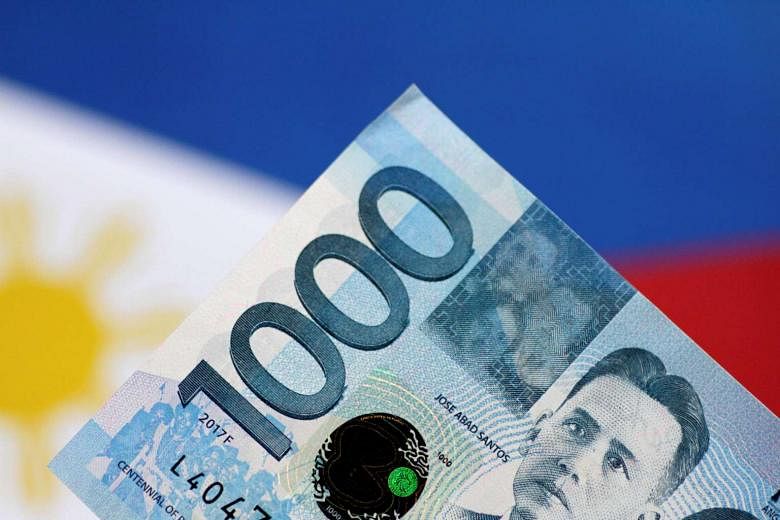Cielito Habito
MANILA (PHILIPPINE DAILY INQUIRER/ASIA NEWS NETWORK) - Are we suffering from dollar diarrhoea? Recent movements in the peso-dollar exchange rate would make it seem that we are.
The exchange rate is the price of a dollar when buying it with pesos. As with any commodity, that price moves according to the law of supply and demand. That the price of a dollar in terms of pesos has lately breached P50 (S$1.36) and is testing the P51 mark tells us that the demand for dollars in the country has been rising, or the supply of dollars has been declining, or both.
Analysts describe a rising peso-dollar exchange rate as a weakening of the peso (and the opposite movement as a strengthening), because when one needs more of it to buy a dollar, it means the value of the peso has declined. So why is the peso weakening lately? What exactly is happening?
Traditionally, movements in the region's currencies have largely been influenced by the strength of the dollar relative to the currencies of the United States' main competitors, particularly the euro. That is, when the dollar strengthens, the region's currencies weaken, and vice versa, reflecting the fact that the United States remains a dominant trading partner for much of the region.
The dollar has been on a general weakening trend since the start of the year. Looking at our closest Asean neighbours, the Thai baht and the Malaysian ringgit have indeed strengthened since the year started (by about 5 per cent), as has the Indonesian rupiah, although to a lesser extent (about one per cent). These are as would be expected, in the face of the weakening dollar.
The Philippine peso is something else.
Relative to the start of the year, it is now the weakest compared to our cited neighbours' currencies.
It has mostly moved in the opposite direction from those currencies in the past months, most especially since mid-June. Something unique to the Philippines is happening lately that is leading to a net outflow of dollars-hopefully not a diarrhoea-that merits close attention from both our economic and political authorities.
It doesn't take an economist to see that political uncertainty is getting in the way of greater confidence in the economy, in spite of the relatively good numbers in prices, jobs, and incomes. One can surmise that the Marawi conflict and consequent martial law declaration in Mindanao had much to do with the most recent steep peso decline.
The depreciation of the peso to levels not seen in 10 years is, as always, not altogether bad news. It may be bad in that it suggests lower confidence in the economy, which affects our ability to attract more job-creating investments from both foreigners and Filipinos. It is also bad news because it raises the peso cost of imports.
This translates to higher domestic prices for imported commodities, as well as higher cost of production (and therefore prices) for domestic goods relying on imported inputs-and that means most products we consume.
Thus, unless the exchange rate goes back down to more "normal" levels, we can expect the inflation rate to inch up from the 3 per cent at which it has been averaging since the start of the year.
But the peso depreciation is good news for exporters and the workers they employ, for domestic producers of products that compete with now more expensive imports, for overseas Filipino workers and their families, and for the government itself.
Peso depreciation results in higher customs revenues due to the higher peso value of imports, and given the government's reduced debt burden over the years, this now outweighs the higher peso value of foreign debt service payments and government imports.
What can we expect in the year ahead? The crystal ball is rather cloudy right now.
When asked for my own fearless forecast on the exchange rate, I always point out that not even the most sophisticated mathematical models of the economy can capture all the key elements that determine the actual level of the exchange rate. I can make a reasonable prediction (more of a guess) on the general direction the exchange rate will take, and given current developments, it's likely to be upward, as most analysts would bet. But don't ask me what the rate will be. Anyone's guess may be as good as mine.

